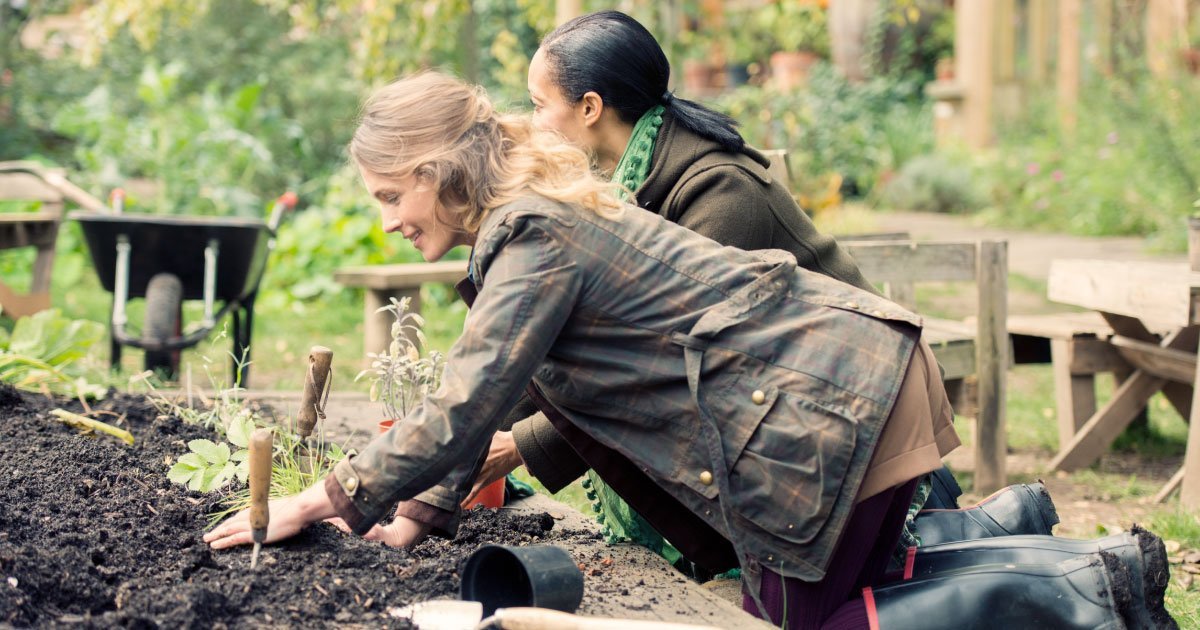","after_title":"","widget_id":"widget-0-0-0"}}" />[/siteorigin_widget]
","after_title":"","widget_id":"widget-0-0-1"}}" />[/siteorigin_widget]
Hurrah, it’s finally Spring and I can start planting my garden. Gardens are wonderful additions to any emergency preparedness plan. People always complain that fresh fruits and vegetables cost too much – why is this? Apples literally grow on trees, so why on earth do they cost $2.39/ lb? It’s not because fresh fruits and vegetables are difficult to grow. The high costs are because of the cost of labor and logistics it takes to harvest and ship it to your grocery store. If you are new to gardening and don’t already have garden infrastructure, you’ll probably have to invest in preparing the soil the first year or two. Even if you don’t save money, you’ll never learn how to garden if you don’t mess up really badly for a couple of years first.
First I have to figure out what I want to do with my garden space. I just moved into a new home, and I have a new backyard to go with it. I haven’t get figured out what will grow best in my yard, and where, so I have a lot of planning to do.
How to Garden:
All gardens begin as somebody’s dream. If you haven’t spent most of the winter flipping through seed catalogs, daydreaming about what you’re going to grow when the weather gets warmer, there’s no reason why you can’t start now. I get a huge stack of seed catalogs shipped to my mailbox every December (Usually from Burpee’s, Baker Creek Seeds, Seed Savers, and Territorial Seed, among others) and I spend the next two and a half months of winter salivating over which variety of tomato I should plant. A quick glance at any of these seed catalogs will reveal a hidden world of vegetables I bet you didn’t know existed: fuzzy, pink tomatoes; purple carrots; green radishes. Why would you want to grow a regular, plain old red tomato when you can grow green stripey ones?
Heirloom varieties of vegetables are very popular because you can save the seeds and they will grow true to type year after year. The downside is some heirlooms can be tricky to grow compared to hybrid varieties. Where hybrid varieties may be easy for the novice gardener, I would not recommend attempting to save seed from them. In my pride, I attempted this one year with hybrid purple carrots. They went to seed, and I had non-edible purple carrot flowers clogging up my yard for years. Lovely ornamental, mind you, but not quite what I was originally hoping for. Emergency Essentials offers packs of heirloom seeds that are known for easy germination and fruit set.
Some other questions to ask yourself when choosing what to grow: What do you like to eat? I would advise against planting beets if you don’t like them. Save that garden space for something you actually enjoy eating. Examine your available space. How much room do you have, and how much of it is in full sun/ partial sun/ shade? Some vegetables require a lot of sun, whereas prefer shade.
Consider putting in some permanent plants, like asparagus crowns, raspberry canes, or semi-dwarf apple trees.
Most importantly, don’t be afraid of failure. The only way to get good at gardening is to garden a lot. It’s good to read garden blogs and check out books from the library, but you will need hands on experience, too.
If after all this you’re still not convinced that you should start gardening, I’ll remind you that a healthy diet is a varied diet. If your diet is not varied to include all your essential amino acids, you put yourself at risk for developing lovely nutritional deficiencies such as beriberi, scurvy, and my personal favorite, pellagra.
So on that note, do yourself a favor and plant some tomatoes this year. Now I leave you to mull over which color you’d like to plant.

